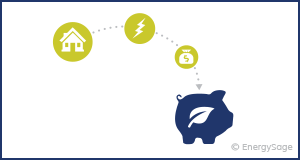How much power can be sent over a transmission line is restricted. The beginnings of the cutoff points change contingent on the length of the line. For a short line, the warming of guides because of line misfortunes draws a warm line. Assuming an excess of current is drawn, guides might hang excessively near the ground, or guides and gear might be harmed by overheating. For middle-length lines on the request for 100 kilometers (62 miles), the cutoff is set by the voltage drop in the line. For longer AC lines, framework solidness draws the line for the power that can be moved. Roughly, the power streaming over an air conditioner line is relative to the cosine of the staging point of the best electricity rates in Waco and current at the getting and sending closes. This point shifts relying upon framework stacking and age. It is bothersome for the point to move toward 90 degrees, as the power streaming reduces yet the resistive misfortunes remain. Roughly, the permissible result of line length and the most extreme burden is relative to the square of the framework voltage. Series capacitors or stage-moving transformers are utilized on lengthy lines to further develop dependability. High-voltage direct current lines are confined simply by warm and voltage drop limits since the staging point isn’t material to their activity.
Temperature Dissemination

Up to now, it has been exceedingly difficult to predict the temperature dissemination along the link course, with the goal that the greatest pertinent current burden was generally set as a split of the difference between comprehension of activity conditions and chance minimization. The accessibility of modern conveyed temperature detecting (DTS) frameworks that action continuously temperatures up and down the link is an initial phase in checking the transmission framework limit. This checking arrangement depends on involving uninvolved optical strands as temperature sensors, either coordinated straightforwardly inside a high-voltage link or mounted remotely on the link protection. An answer to the above lines is likewise accessible.
For this situation, the optical fiber is incorporated into the center of a stage wire of the above transmission lines (OPPC). The coordinated Powerful Link Rating (DCR) or likewise called Constant Warm Evaluating (RTTR) arrangement empowers not exclusively to consistently screen the temperature of a high-voltage link circuit progressively, however, to use the current organization’s ability to its greatest securely. Besides, it gives the capacity the administrator to anticipate the way of behaving of the transmission framework upon significant changes made to its underlying working circumstances.
Load adjusting
The transmission framework accommodates base burden and pinnacle load capacity, with security and adaptation to internal failure edges. The pinnacle load times differ by locale to a great extent because of the business blend. In exceptionally blistering and freezing environments home cooling and warming burden significantly affect the general burden. They are regularly most elevated in the late evening in the most blazing piece of the year and early daytime and mid-nights in the coldest piece of the year. This causes the power prerequisites to shift by the season and the hour of the day. Appropriation framework plans generally think about the base burden and the pinnacle load.
Disappointment insurance
Under overabundance load conditions, the framework can be intended to flop nimbly as opposed to at the same time. Brownouts happen when the stockpile power dips under the interest. Power outages happen when the stockpile flops totally. Planned power outages (likewise called load shedding) are deliberately designed electrical blackouts, used to convey lacking power when the interest for power surpasses the inventory.
